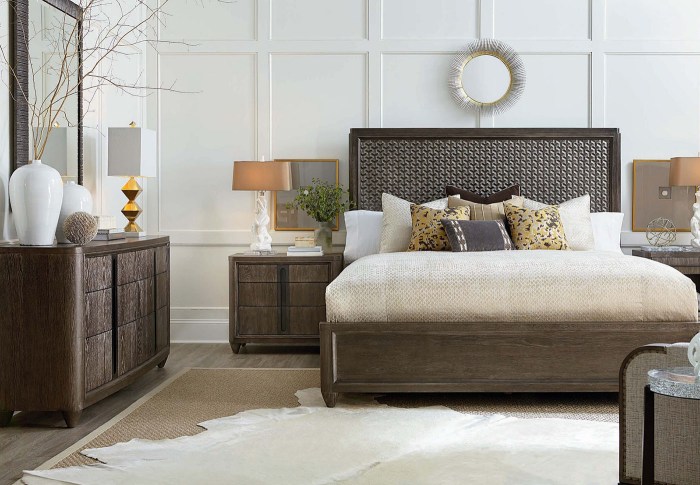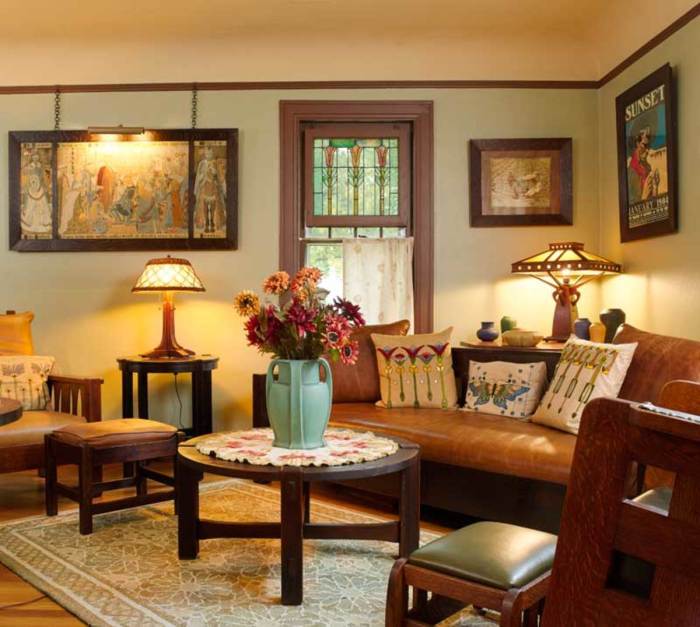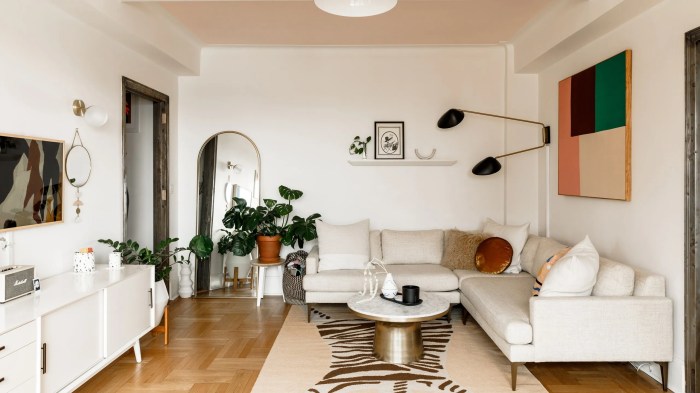Art house furniture takes center stage, where boundaries blur between art and functionality. Embark on a journey to discover its unique style, captivating history, and the innovative designs that continue to push the envelope.
From the hands of renowned designers to the evolution of its aesthetics, art house furniture has left an indelible mark on the world of interior design. Get ready to delve into a world where creativity meets comfort, and where every piece tells a story.
Definition and Characteristics of Art House Furniture
Art house furniture is a unique and distinctive style of furniture that combines elements of art and design. It is characterized by its bold and innovative forms, unconventional materials, and exceptional craftsmanship.
Art house furniture designers often experiment with new and unusual materials, such as recycled metals, plastics, and fabrics. They also employ a variety of techniques, including welding, casting, and molding, to create furniture that is both visually appealing and functional.
Iconic Art House Furniture Designers
Some of the most iconic art house furniture designers include:
- Ettore Sottsass
- Ron Arad
- Zaha Hadid
- Frank Gehry
- Marc Newson
These designers have created furniture that is not only beautiful but also challenges traditional notions of what furniture should be. Their work has helped to redefine the boundaries of furniture design and has made art house furniture a popular choice for collectors and design enthusiasts.
Historical Context and Evolution: Art House Furniture
The origins of art house furniture can be traced back to the Arts and Crafts movement of the late 19th century, which emphasized the importance of handcrafted objects and traditional techniques. This movement was a reaction to the mass production and standardization of furniture during the Industrial Revolution.
Art house furniture was also influenced by the Art Nouveau movement, which was characterized by its use of organic forms and flowing lines.
In the early 20th century, art house furniture became increasingly influenced by the modernist movement. Modernist furniture was characterized by its simplicity, functionality, and use of new materials. Art house furniture designers began to experiment with new forms and materials, such as tubular steel and glass.
They also began to explore the relationship between furniture and architecture.
Art house furniture often embodies a sense of exclusivity and uniqueness. For those seeking distinctive pieces, Stowers Furniture offers an array of handcrafted masterpieces. From intricately carved chairs to bespoke tables, their creations blend traditional techniques with modern flair. Ultimately, art house furniture transcends mere function, becoming a testament to the artistry and craftsmanship that elevates any living space.
In the post-World War II period, art house furniture continued to evolve. New materials, such as plastics and fiberglass, were introduced into furniture design. Art house furniture designers also began to explore new forms and styles, such as pop art and minimalism.
Influences of Art Movements
Art house furniture has been influenced by a variety of art movements throughout history, including:
- Arts and Crafts movement
- Art Nouveau movement
- Modernist movement
- Pop art movement
- Minimalism movement
Each of these art movements has had a unique impact on the design of art house furniture. For example, the Arts and Crafts movement emphasized the importance of handcrafted objects, while the Modernist movement emphasized the importance of simplicity and functionality.
Role of Cultural Shifts
Art house furniture has also been influenced by cultural shifts throughout history. For example, the rise of the middle class in the 19th century led to an increased demand for furniture that was both stylish and affordable. This led to the development of new furniture styles, such as the Victorian style and the Eastlake style.
Art house furniture, with its unique designs and exquisite craftsmanship, often requires specialized delivery services. If you’re wondering about tipping furniture deliverers, here’s a comprehensive guide to help you make an informed decision. Whether you choose to tip or not, remember that these individuals play a crucial role in ensuring your art house furniture arrives safely and intact.
The social and political changes of the 20th century also had a significant impact on the design of art house furniture. For example, the rise of the feminist movement led to a greater demand for furniture that was designed for women.
This led to the development of new furniture styles, such as the Art Deco style and the Bauhaus style.
Examples of Evolution
Art house furniture has evolved over time in a number of ways. Some of the most notable examples of this evolution include:
- The use of new materials, such as tubular steel and glass
- The exploration of new forms and styles, such as pop art and minimalism
- The development of new furniture styles, such as the Victorian style and the Eastlake style
- The rise of the middle class led to an increased demand for furniture that was both stylish and affordable
- The social and political changes of the 20th century also had a significant impact on the design of art house furniture
These are just a few examples of how art house furniture has evolved over time. As the world continues to change, so too will the design of art house furniture.
When it comes to moving your cherished art house furniture, it’s imperative to entrust the task to reliable professionals. For those residing in Richmond, Virginia, furniture movers richmond va offers unparalleled expertise and meticulous care in handling your valuable possessions.
Their unwavering commitment to protecting your art house furniture during relocation ensures its safe arrival at your new abode, allowing you to continue savoring its aesthetic charm and historical significance.
Design Principles and Aesthetics

Art house furniture embraces unconventional design principles and aesthetics that challenge traditional norms. Asymmetry, bold colors, and organic forms are key elements in creating visually striking and thought-provoking pieces.
Asymmetry and Negative Space
Asymmetry refers to the deliberate imbalance in the distribution of visual weight within a design. This creates a dynamic tension that draws the eye and encourages viewers to engage with the piece on a deeper level. Negative space, the areas surrounding and between objects, is equally important in art house furniture.
It provides a sense of depth and allows the main elements to breathe and stand out.
Bold Colors and Unconventional Materials
Art house furniture often incorporates bold and unexpected colors that evoke emotions and create a sense of vibrancy. These colors may be used in unconventional ways, such as contrasting bright hues with muted tones or applying them to unusual surfaces.
Additionally, art house furniture makers experiment with unconventional materials such as recycled objects, natural fibers, and industrial elements to create unique and sustainable pieces.
Organic Forms
Organic forms, inspired by nature, are a hallmark of art house furniture. These forms bring a sense of fluidity and movement to the pieces, creating a connection between the natural and the artificial. They may be expressed through flowing curves, irregular shapes, or the use of natural materials such as wood or stone.
Functionality and Comfort
Contrary to common misconceptions, art house furniture is not merely decorative. It skillfully combines visual aesthetics with practical functionality, creating pieces that are both visually striking and comfortable to use.
Art house furniture designers prioritize ergonomics and comfort, ensuring that their creations provide ample support and relaxation. They employ innovative techniques and high-quality materials to craft pieces that are not only visually appealing but also highly functional.
Comfort in Design
- Ergonomic Design:Art house furniture often incorporates ergonomic principles to provide optimal comfort and support. Chairs and sofas are designed with contoured seats, adjustable lumbar support, and plush cushioning.
- Durable Materials:High-quality materials, such as premium fabrics, genuine leather, and solid wood, are used to ensure durability and longevity. These materials provide a comfortable and inviting feel, even after prolonged use.
- Multifunctional Pieces:Many art house furniture pieces serve multiple functions, maximizing space and practicality. Ottomans can double as footrests or extra seating, while coffee tables may feature hidden storage compartments.
Materials and Techniques
Art house furniture embraces a diverse range of materials, from exotic woods and gleaming metals to opulent textiles and innovative composites. Each material brings unique aesthetic and functional qualities to the piece, inspiring designers to push the boundaries of creativity.
Exotic Woods
Exotic woods, sourced from around the globe, offer a captivating palette of colors, textures, and grains. Mahogany, with its rich reddish-brown hue, exudes elegance and warmth. Teak, renowned for its durability and resistance to moisture, lends a sophisticated touch to outdoor furniture.
Ebony, with its deep black heartwood, creates striking accents and intricate inlays.
Metals
Metals, both ferrous and non-ferrous, play a pivotal role in art house furniture. Stainless steel, with its corrosion resistance and sleek aesthetic, is commonly used for frames, legs, and hardware. Bronze, with its warm patina and malleability, allows for intricate castings and decorative embellishments.
Aluminum, lightweight and durable, is ideal for outdoor furniture and contemporary designs.
Textiles
Textiles add comfort, texture, and visual interest to art house furniture. Velvet, with its plush pile and luxurious drape, creates a sense of opulence. Linen, with its natural breathability and durability, is perfect for upholstery and curtains. Leather, with its supple texture and timeless appeal, adds a touch of sophistication and durability.
Specialized Techniques
The creation of art house furniture often involves specialized techniques and exceptional craftsmanship. Marquetry, the art of inlaying different wood veneers, creates intricate patterns and decorative accents. Carving, whether intricate or minimalist, adds depth and texture to wooden pieces. Upholstery, the art of covering furniture with textiles, requires meticulous attention to detail and a keen eye for aesthetics.
Material Comparison Table
| Material | Properties ||—|—|| Exotic Woods | Durable, aesthetically pleasing, warm to the touch || Metals | Strong, corrosion-resistant, sleek || Textiles | Comfortable, adds texture and visual interest || Composites | Lightweight, durable, versatile |
Current Trends and Innovations

The art house furniture movement continues to evolve, with designers pushing the boundaries of creativity and innovation. Sustainability and technology are at the forefront of these trends, as designers seek to create pieces that are both environmentally friendly and technologically advanced.
Use of Sustainable Materials
Sustainability is a major concern for many contemporary art house furniture designers. They are increasingly using eco-friendly materials, such as reclaimed wood, bamboo, and recycled plastic, to create their pieces. These materials not only reduce the environmental impact of furniture production but also give the pieces a unique and distinctive look.
Integration of Technology
Technology is also playing a role in the evolution of art house furniture. Designers are using 3D printing, laser cutting, and other advanced techniques to create pieces that are both visually stunning and highly functional. These technologies allow designers to create complex shapes and structures that would be impossible to achieve with traditional methods.
Examples of Contemporary Designers
Some of the most innovative contemporary art house furniture designers include:
- Max Lamb: Known for his use of reclaimed materials and innovative designs
- Sabine Marcelis: Creates pieces that explore the relationship between light and form
- Studiopepe: A Milan-based design studio that creates furniture that is both functional and sculptural
Closing Notes

As we bid farewell to our exploration of art house furniture, we leave with a newfound appreciation for its artistry and practicality. Whether you’re an avid collector or simply seeking inspiration, this extraordinary style continues to captivate and inspire, reminding us that furniture can be so much more than just a place to sit or store.
Commonly Asked Questions
What distinguishes art house furniture from traditional furniture?
Art house furniture embraces asymmetry, bold colors, and organic forms, prioritizing aesthetics and artistic expression over conventional design norms.
Is art house furniture solely decorative?
No, while art house furniture is visually striking, it’s also designed to be functional and comfortable. Many pieces seamlessly blend art and practicality.